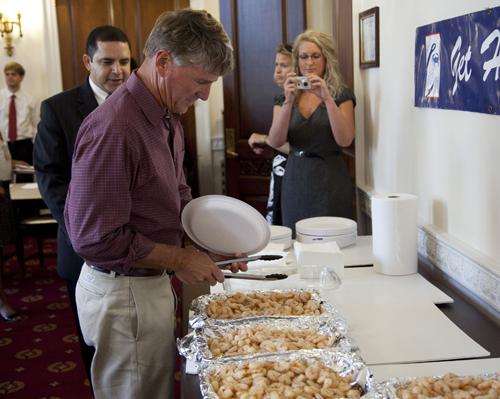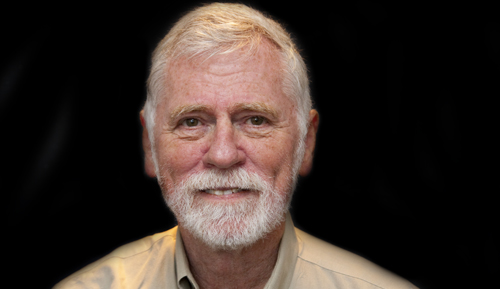The $64,000 question: “Is seafood from coastal Louisiana safe to eat?”
Personal decisions are mixed. U.S. Secretary of Commerce Gary Locke, President Barack Obama and Governor Bobby Jindal eat Louisiana seafood. Many others say they are letting a little time pass before resuming eating what has always been considered the best seafood on earth.
The governor has asked BP for $173 million over the next five years to fund a monitoring program. BP has offered $13 million over three years.
At a time when BP has spent over $90 million for a public relations plan to overcome negative opinions of their brand, those involved in the Louisiana seafood industry know full well that they too, need millions to reestablish confidence in their (our) product, both locally and nationally.
We look to the federal Food and Drug Administration and National Oceanographic and Atmospheric Administration to advise us on seafood safety in federal waters, and the Louisiana Department of Health and Hospitals, and Louisiana Department of Wildlife and Fisheries for closer to shore state waters. Ultimately, FDA must approve the other recommendations to allow interstate commerce.
Samples were taken along the coastline in non-oiled areas to develop a baseline for data comparisons. Samples are now taken both in the field and at processing establishments.
Two types of analyses are tabulated. The first is chemical analysis that looks at the levels of detected hydrocarbons (number of milligrams of each hydrocarbon per kilogram of seafood weight), especially the Polycyclic Aromatic Hydrocarbons, and compares them to FDA/NOAA “levels of concern” (see Table 3 in the DHH seafood safety report link given later) to determine if they may be dangerous to consume.
The second is sensory analysis. Is a trained scientist able to smell and/or taste oil in the sample? If hydrocarbons are detected, it does not mean that the food is inedible, but it does prohibit interstate commerce of the sample.
Waters remain open for fishing and harvest if no oil is present and seafood sampled passes the chemical tests.
Both of these agencies are supporting the safety of fisheries coming from fishing zones they have approved. This settles it, right?
Not so fast. The National Resources Defense Council, a national environmental activist group, questions agency methodology and sample size. Referring to NOAA’s Sept. 2 opening of 5,130 square miles of Gulf waters to commercial fishing, an action based on analysis of 73 individual shrimp according to NRDC, their lead spokesperson, Dr. Gina Solomon asked, “Does that reassure you that they’ve really found whatever contamination might be out there?”
Two local environmental watchdogs, Louisiana Environmental Action Network and the Lower Mississippi Riverkeepers, issued a report authored by chemist Wilma Subra in which she analyzed several soil, vegetation, oyster and blue crab samples taken from the vicinity of Oyster Bayou near the Atchafalaya River mouth and Pass-a-Loutre/Redfish Bay to the east.
Their results (www. bostonchemicaldata.com/LEAN) indicated the presence of hydrocarbons, including PAHs, but none of the data exceeded the Environmental Protection Agency and Centers for Disease Control “levels of concern” used by FDA and DHH. Their data did link the hydrocarbons found with the BP gusher.
The periodic updates (www.dhh. louisiana.gov/offices/?ID=378) by DHH are similar. They are criticized for what some consider small sample sizes. It is always better to have larger numbers of samples, of course. Can’t be argued. They say they are following approved protocols, and their sample sizes are as follows: oysters, 211 samples, each sample with 20 oysters; shrimp, 126 samples of 100 shrimp each; crabs, 61 samples of 12 crabs each; finfish, 165 samples with 6-12 finfish each. Hydrocarbons were detected in 24 percent of the samples, with none exceeding the “levels of concern.” According to Dr. Raoult Ratard, state epidemiologist, each individual was checked for about 10 chemicals, thus the reports that “thousands” (actually about 19,000) of samples were run.
As a result, the agencies tell us there is no reason to be concerned about the safety of seafood. Nonprofits, using valid but fewer and much smaller data sets, are urging people to be very careful.
Such disparities of recommendations regarding safety leave the public confused and wanting to know how to decide if they should feel safe eating local seafood.
Bottom line, State and federal agencies are saying that it is safe to eat seafood from the areas they have opened for fishing. They make no such recommendations for unlisted areas and suggest caution if self-harvesting from untested zones. The Louisiana Restaurant Association, Louisiana Office of Tourism, the Louisiana Seafood Promotion and Marketing Board, many commercial fishers, and others are touting their recommendations.
The above named environmental groups, and some commercial fishers, are calling for more thorough testing and recommending caution. I assume they will issue press releases when they are convinced that seafood is safe for consumption.
As in most situations where there is risk, individuals must make their own decisions based on how comfortable they are with the testing protocols that have been followed, the trust they place in our public health agencies, and their acceptance of risk in their diet.
Certainly anyone with health issues, especially associated with the liver, should consult their personal physician for advice.
Since I’ve always relied successfully on the food guidelines and monitoring of federal and state health agencies, I’m willing to trust their judgment now. I’m continuing to enjoy our local seafood, but I’m limiting the amount I consume. As safe reports mount, I’ll pick up the pace. See you at Sid-Mar’s this weekend!
Robert Thomas is a professor of environmental communication. He can be reached at rathomas@loyno.edu.
On The Record is a weekly column open to any member of the Loyola’s faculty and staff. Those interested in contributing can contact letter@loyno.edu.

Representative Gene Taylor, Miss.-D, prepares to eat shrimp from the Gulf in an effort to show that Gulf seafood is safe. (AP Photo/Evan Vucci)






